|
As the title states, the new book is a tourist
guide through the area that Abraham Lincoln represented in the
Eighth Judicial Circuit in the 1800ís that took place prior to his
Presidency. Lincoln was a known friend to many, including a large
collection of people in Logan County.
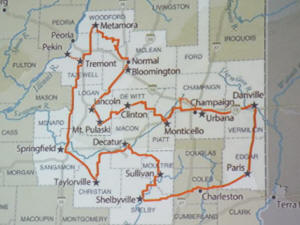
His circuit from 1847 to 1853 included Sangamon, Menard, Tazewell,
Woodford, McLean, Logan, DeWitt, Champaign, Ford, Vermillion, Edgar,
Shelby, Moultrie, Macon, and Christian counties.
Fraker began by noting that in the day, the Eighth Judicial Circuit
was the most important circuit in the state. He noted that this was
prior to the rise of influence in Chicago. He also noted that the
circuit was quite large in the early days, but was later reduced to
eight counties, that still contained Logan County.

Lincoln rode the circuit on horseback, and had a set route that
permitted him to visit specific county courthouses on a regular
basis. Fraker noted that the square mileage of the circuit was twice
the size of the state of Connecticut.
Lincoln rode the circuit twice a year, in the spring, and in the
fall. He would leave Springfield in the middle of March and
generally arrived back home in the mid-part of June. In the fall, he
would leave home in August and return in November.
He noted some significant differences in the 1850ís map versus
today. He said that first Tremont was the County Seat of Tazewell
County, but it changed to Pekin while Lincoln was riding the
circuit. He noted that in McLean County, the town of Normal did not
exist; in Champaign County the town of Champaign did not exist. And,
as most know, in Logan County, the county seat bounced from
Postville, to Mount Pulaski, to Lincoln.
Fraker noted that Lincoln crossed Coles County but Coles was not in
the circuit, though some have claimed that it was.

Fraker pointed out locations of the Lincoln Circuit Markers, put up
by the Lincoln Circuit Marker Association. He explained that the
markers are at county lines where Lincoln crossed into different
counties along his circuit. He said the Logan/McLean county marker
is located on an east/west road west of Atlanta.

Fraker said that these markers are not easily found. To help readers
of the book to find the markers, he has added GPS coordinates to
assist tourists. Fraker noted that in many communities, the markers
have been defaced, but some have been partially restored. In
addition, he said that there are people even in the communities
where the markers stand that do not know why they are there.
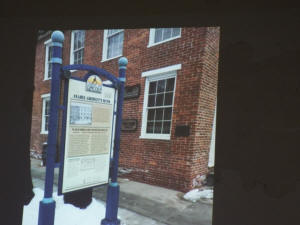
Fraker mentioned briefly the Looking for Lincoln signage that can be
found along the circuit and noted that there is one such sign at the
Mount Pulaski Courthouse. In his book, the illustration he uses is
the signage outside his own office building in Bloomington.
Also in Frakerís book there are more than 90 photos of various
significant landmarks in the Eighth Circuit of Lincolnís history.
Fraker noted that within the circuit, many of the buildings are now
gone, but a few do remain. Among those remaining of course is the
Mount Pulaski Courthouse, but also the Metamora Courthouse in
Woodford County.
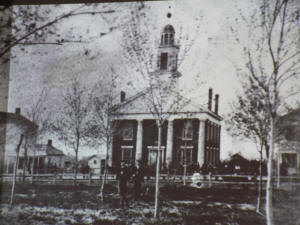
Fraker said that between the two courthouses, he finds the Mount
Pulaski building the most desirable historically because it is still
all original. He said the Metamora Courthouse is wonderful, and
there is a really good museum on the ground floor, and the original
courthouse on the second floor. He said while the museum is really
nice, it takes away from the originality of the building. At Mount
Pulaski, he said when one walks in the front door, they immediately
feel the history and see the courthouse as Lincoln himself would
have seen in in the days of the circuit.

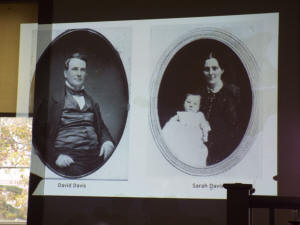
In the Bloomington area, Judge David Davis and his wife Sarah were
dear friends to Lincoln, and influential in their community.
He noted that Sarah Davis was much loved by everyone, and that there
has been a child named Sarah in every generation since.
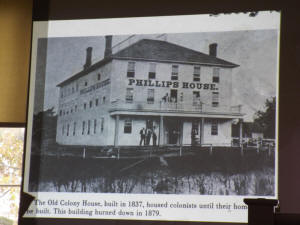
Along the circuit, Lincoln stayed in a variety of locations,
including one regular stop he made in the town of Delavan. In the
day the inn was named the Delavan House, but was later renamed as
the Phillips House. The building was built in 1837 and first called
the Colony House. The concept was that the inn provided a place for
colonists to the area to live while they were building their
homesteads. Once their homes were built they moved out and took
residency on their newly settled property. The building burned in
1879.

[to top of second column] |

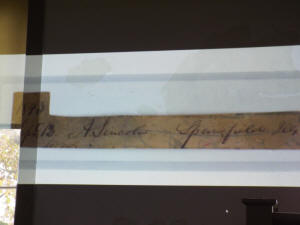
Fraker said that there was a confirmed connection between Lincoln
and the Delavan (Phillips) House, in that there is a signature from
the inns registry that is still in existence. He related that a
woman from his church had told him once that she and her husband had
received the signature from a relative as a wedding gift. Fraker
asked to see it, and was given that opportunity.
He noted that the signature had been cut out of the registry, which
was a shame, as many of the lawyers and judges who rode the circuit
stayed in the same places. He said it was hard to say how many other
historical signatures would have been on that page.
He also explained that the signature, which is dated September 12,
1843, offers proof positive to disprove another historical claim. He
said that another book written by another author chronicles the
daily travels of Lincoln on the circuit. In that book on this same
date it is reported that Lincoln spent the night in Metamora. Fraker
said this signature, which has been authenticated, shows that the
other book is in error.
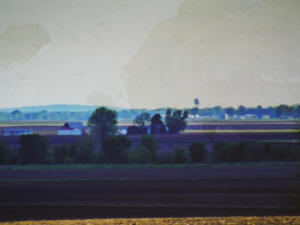

Other interesting stories in the book include a stop at the Hoblit
Farm in Atlanta. Fraker said he visited the farm and its present day
owner Susan Hoblit. The Hoblit family has a long history in the
Atlanta area, and Susanís family history includes a great
relationship between Lincoln and one of the senior Hoblitís. Hoblit
told a story about how the farm house had burned, and the family was
living in a barn on the property while the home was being rebuilt.
Lincoln paid a visit, and the mister of the house said that he would
find a friend to take Lincoln in. Lincoln asked Mr. Hoblit where his
own family was staying, and Hoblit indicated in the barn. Lincoln
surmised that if it was good enough for them, then it was good
enough for him as well, so he stayed with the Hoblit family, and
slept in the barn.
Fraker said that barn still stands on the family farm.
He also noted that the Hoblit farm is located on a high spot in the
area, and looking southward, Susan Hoblit can see Elkhart hill, 23
miles away.
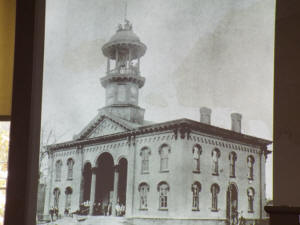
Another interesting story comes from Urbana. When Lincoln rode the
circuit, Champaign did not exist. Fraker noted that as the city of
Champaign was being formed and growing up, town officials in Urbana
were hugely concerned that the county seat would be moved to the new
city. To help fight that move, the city built a new courthouse, one
of the most extravagant of its time. Their thought was that if they
built something so wonderful, then no one would dare move the county
seat.

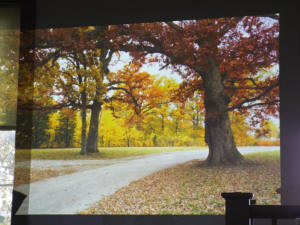
Fraker talked about the terrain where Lincoln traveled, noting that
in many places he rode across prairie where there was only a trail,
if that. He said in many areas, the path he rode is no longer, or it
has been replaced with a modern highway or road. However, he said
there is one piece of the path near Charleston where Lincoln rode
that is still in very close to its original state. He noted that the
road is a single lane gravel path that has changed very little since
the day of the Eighth Circuit.
Fraker spent the better part of an hour, going through dozens of
photos that are included in his new book. The book is an ultimate
self-guided tour book of the Eighth Judicial Circuit with stories
about each location, directions, addresses, and in some cases even
GPS navigation coordinates to assist drivers in finding the
locations.
He talked about each courthouse, and noted that it was not a
coincidence that many of the courthouses in the day were built in a
Salt Box design.
He showed pictures of fords where Lincoln would have crossed creeks
with no bridges, and towns, such as Decatur that are rich with
Lincoln history.
The book also outlines places where Lincoln stayed, including the
less than par Mount Pulaski House, several other inns, many probably
no better, and the homes of friends.

After his presentation, Fraker set up shop at a table upstairs,
where he offered up his new book for sale along with his last
Lincoln book, ďLincolnís Ladder to the Presidency: The Eighth
Judicial Circuit.Ē Fraker also signed copies of the books as they
were purchased.


Guests to the lecture were greeted by Mount Pulaski Courthouse
Director Barbara Stoud-Both, who offered welcoming comments before
the lecture began. Both before and afterward, guests were invited to
enjoy coffee and cookies that were set up downstairs.
[Nila Smith] |